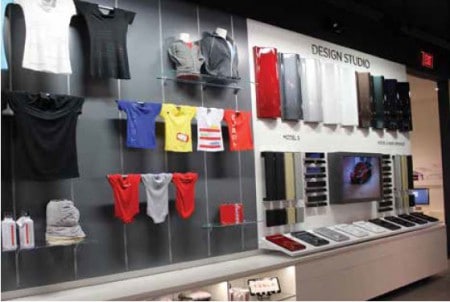Retail – where customer service and technology collide.
By Sebastian Pedavoli – Proxima
If asked to categorise Uber and Tesla, most people would suggest they are technology companies. Despite their technological vision, at their core, these companies are customer service and user experience organisations, although this is enabled by technology.
It’s not how a single piece of technology is used, but an elegant balance that puts the customer at the centre to enable an experience. Uber, for instance, styles itself as “…a ride that matches your style and budget”.
Through some incredibly clever technology, Uber has created a global network that lets customers choose the experience that matches their budget and mood, on demand.
What most customers see as a single app, has revolutionised the experience of getting from A to B, whether it’s in a neighbour’s car, a limo or even a helicopter or boat.
Similarly, Tesla made great proclamations in October last year that “your autopilot has arrived”. A company that has pioneered electric motors and batteries sees itself as catalysing the global shift to consumer adoption of electric cars.
Tesla has combined its research and technology with software to craft a customer experience that hasn’t existed before. Drive yourself, or be driven and recharge for free, forever.
Retailers, particularly those in physical retail, have for the most part been slow to rethink the customer experience of shopping. Despite the increasing threat that online retail has over bricks and mortar, strategies deployed by these businesses have involved simply opening an online store or pivoting
their business entirely, to varying degrees of success.
That’s not to say that online retail is the be all of shopping. Bricks and mortar continues to have advantages in offering customers a way to shop that isn’t solely based on price. Shops offering a premium service and experience have a reason to do so. They also forgo the need to ‘engage’ the customer as online stores regularly do; they already have a captive audience.
With this comes information around what the customer wants, and their behaviours, and this can influence how retailers can go about changing the customer experience.
Regardless of these advantages, retail is a hugely competitive space, and one that retailers can’t afford to sit idly by looking at. With new online stores opening seemingly every day, and international giants like H&M, Uniqlo, and Topshop opening locally, consumers have a neverending amount of choice and variety. Customer loyalty is an increasingly rare commodity for retailers, and one they can maintain by focusing on the experience.
Put simply, the customer sits in the driver’s seat, dictating when, how, and where they want to shop. The future of retail must lie in adopting technology beyond just building an e-commerce platform and loyalty program.
The right blend of technology can revolutionise the customer’s store experience, by inspiring them, solving their needs faster, informing them effectively and making it a personal experience.
Imagine a department store five years from now. Your customer walks in and switches on the store’s mobile app, which they’ve used for the past few days to window shop their favourite items. Immediately, the app determines the customer is in the store and lets them know exactly where they can
find the items they were researching. As they start to wander around the store, carefully placed beacons trigger prompts to the consumer’s phone,
presenting the season’s latest collection and recommendations based on their wish list, shopping cart, or previous online interactions.
In the back end, that same technology alerts the appropriate attendant to be on standby for the customer to discuss the clothes in more detail. The app tells the customer that an attendant is ready to chat, giving the customer the choice to get more help in person or shop solo.
This level of interactivity can be applied in numerous ways. Think about this scenario. The same customer enters the changeroom, closes the door and the music and lighting instantly changes to adapt to the items the consumer has in their hand. The mirror fades into their own personal stylist, suggesting clothes to match the items and showcasing alternative choices; leaving your attendants clear for other customers. Touch signals allow the customer to tap the screen to request suggestions or call a sales attendant for another size, removing the need for the customer to awkwardly poke their head out the door.
From here, the customer can use their mobile to close the transaction or head to the sales attendants to purchase any clothes they want. The experience can extend beyond the store, with the app saving and prompting the customer of any clothes they tried on, but didn’t want or couldn’t purchase at the time. The customer now has the power to choose how they finish their shopping journey.
For the store attendant, the same technology offers huge efficiencies. Knowing which clothes are on the rack could let attendants determine when those racks need to be filled, or the number of items in each changeroom.
The technologies that we use are getting better and better, so the main limitation we have to building these experiences is our imaginations and budgets. Ultimately, it’s all working to create a new level of shopping, merging the physical space the consumer is interacting with, and the content that exists in the digital world of online retail to create an interactive and personalised experience.
Retailers need to think beyond simply offering click and collect pick up options or giving the same promotions online as instore in an effort to merge the online and offline worlds.
There’s an abundance of technology available that can push the boundaries of retail to create a truly engaging experience. Retailers just need to start adopting it and integrating it.
This article first appeared in the ARA’s The Retailer magazine February 2016 issue.
Sebastian Pedavoli is Co-founder and Creative Director at Proxima, a user experience, interface design, and engineering software company. For more information, visit www.proxima.io.






















